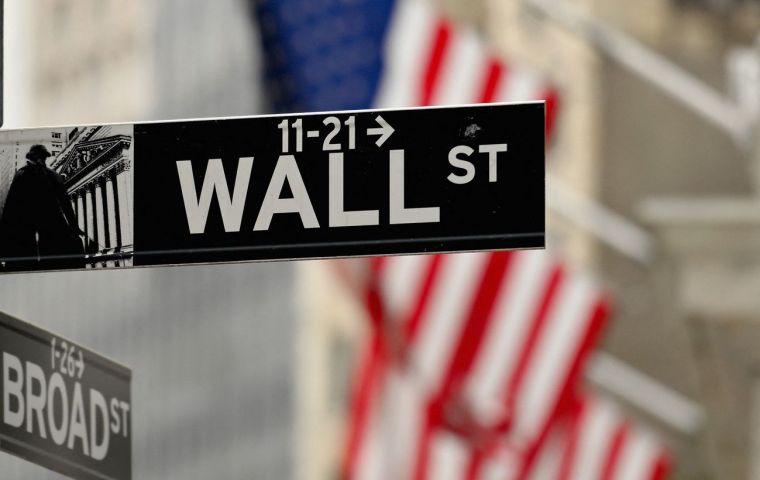MercoPress. South Atlantic News Agency
US inflation in January at a four decades high, and still has to peak
 The figure reported on Friday by the Commerce Department, 6,1% was the largest year-over-year rise since 1982
The figure reported on Friday by the Commerce Department, 6,1% was the largest year-over-year rise since 1982 No peace for president Joe Biden absorbed by the Ukraine war, and for US consumers, inflation keeps surging and is expected to peak sometime midyear, before it begins to weaken. An inflation gauge closely monitored by the Federal Reserve effectively jumped 6.1% in January compared with a year ago.
The figure reported on Friday by the Commerce Department was the largest year-over-year rise since 1982. Excluding volatile food and energy prices, core inflation increased 5.2% in January from a year earlier.
Robust consumer spending has combined with widespread product and worker shortages to create the highest inflation in four decades — a heavy burden for U.S. households, especially lower-income families faced with elevated costs for food, fuel and rent, most probably worsened by the consequences of the Ukraine conflict.
Inflation, though, is expected to remain high and perhaps accelerate in the coming months, especially with Russia's invasion likely disrupting oil and gas exports. The costs of other commodities that are produced in Ukraine, such as wheat and aluminum, have also increased.
President Joe Biden said on Thursday that he would do “everything I can” to keep gas prices in check. Biden did not spell out details, though he mentioned the possibility of releasing more oil from the nation's strategic reserves. He also warned that oil and gas companies “should not exploit this moment” by raising prices at the pump.
A separate report Friday showed that orders for long-lasting factory goods rose sharply in January, led by a rise in demand for airplanes. The figures indicate that many companies are willing to invest more in industrial equipment and other goods, a sign of confidence in the US economy.
“Overall, the real economy appears to be in stronger health than we feared,” said Paul Ashworth, chief U.S. economist at Capital Economics, a forecasting firm.
Loretta Mester, president of the Federal Reserve Bank of Cleveland, said that she supported a series of rate hikes beginning in March. But she said the Fed should remain flexible: Faster rate hikes might be needed, she said, if inflation hasn't begun to fade by mid-year, or more gradual increases if inflation is slowing.
Fed officials want inflation to fall back to its 2% target, as measured by the Commerce Department's gauge, released on Friday. A separate measure, the consumer price index, released two weeks ago, showed that inflation reached 7.5% in January from a year earlier, also a four-decade high.




Top Comments
Disclaimer & comment rulesCommenting for this story is now closed.
If you have a Facebook account, become a fan and comment on our Facebook Page!